Green and digital change powered by innovation at IASP Seville
/The_opening_ceremony_with_IASP_and_regional_authorities.jpg)
Science parks and areas of innovation are spaces where new thinking builds solutions to solve current challenges, and with climate change, there are an abundance of challenges to meet. That’s why at IASP Seville, which took place from 27-30 September 2022, we brought together experts and practitioners from all over the world to explore “Green and digital change powered by innovation: the role of innovation ecosystems”.
Sponsored by TusPark and hosted by Cartuja Science and Technology Park in a venue at the heart of the park, it brought together speakers and delegates from 60 countries to discuss the different strategies they are using to help their communities and regions benefit from digitalisation, and drive green innovation. Their role as Triple and Quadruple Helix connectors was one of the key themes to emerge from three days of intense knowledge sharing, highlighting how IASP’s global community contributes to sustainable prosperity while also meeting our climate goals.
The opening ceremony was addressed by local authorities including the President of the Regional Government, Juanma Moreno, and Mayor of Seville Antonio Muñoz, underlining once more the real-world impact of the innovation that happens in science parks: both recognised the economic and social value of local host, Cartuja Science and Technology Park, and the work they do to support the green and digital transformation.
Green and digital hand in hand
Just as we now increasingly make the distinction between what happens in online spaces and what happens in offline spaces, let’s start with the key themes from the physical world. Of course, there’s significant crossover between the two, and digital solutions have a huge real-world impact, but first we’ll take a look at more tangible themes affecting buildings, industry and infrastructure: you can read an overview of the digital focus here.
Infrastructure, architecture and urban planning
The first plenary session featured three cutting edge infrastructure projects leading the way to sustainability in The Netherlands, Canada and in space. At High Tech Campus Eindhoven, three strategic pillars of being environmentally (and wildlife!) friendly, building a diverse community, and accelerating innovation are key to the campus’s identity. In a phrase much echoed by delegates during the conference, "it’s not just about the buildings" at Canada’s McMaster Innovation Park, it’s about using their own companies’ tech innovations to decarbonise the infrastructure and demonstrate that sustainability can be economically viable. And in space, the Nanoracks GWC Science Park will make research in this unique environment quicker, easier and less bureaucratic: pioneering experiments in space are already making life-changing discoveries with terrestrial impact, like the development of China's drought-resistant Luyuan-502 wheat. That was brought to orbit on a government-launched satellite, but Nanoracks aims to open this environment to commerical use.
Speakers also explored how buildings and knowledge environments can be designed and optimised to not only be sustainable, but to enable innovation. Architects and urban planners shared their explorations of the physical and social dimensions of innovation ecosystems, while practitioners presented best practice examples of on-site energy conservation, water recycling and decarbonised energy islands in their STPs and AOIs.
Cities as living labs and decarbonising industry
Exploring strategies for innovation ecosystems to move towards carbon zero, Endesa’s Rafael Sánchez explained how eCity Seville will use the island of Cartuja as a demo site for the city of the future, and a living lab to test smart mobility and energy solutions. We also got a look at Madrid as an ecosystem of innovation and how it contributes to the solutions of the future (yes, data and digital solutions will be key!), and co-creation in western Sweden on its journey to be a fossil-independent industrial region, based on renewable and recycled raw materials.
Definitions and a historical overview
IASP conferences are an ideal venue to consider the theoretical and academic dimension of our industry, and delegates heard about the latest taxonomy of innovation ecosystems, an IASP study commissioned by the EU’s Joint Research Centre, that will help us better define and understand the variety of different but related environments that fall under the science park/area of innovation umbrella.
The history of our industry also offers valuable insights into our future, and IASP Seville heard a historical overview of 20 years of past conference papers. It took a look at some of the seminal material written by both academic researchers and STP practitioners between 1999 and 2009, and asked if practitioner data should be given more weight when forming policy and strategically designing innovation environments.
It is clear, however, that delegates at IASP Seville were here to learn from the practical experiences of their peers, and their perspecitve on the work parks and AOIs are doing to support companies and communities keep up with the digital revolution – read more about what our global experts had to say!
/)

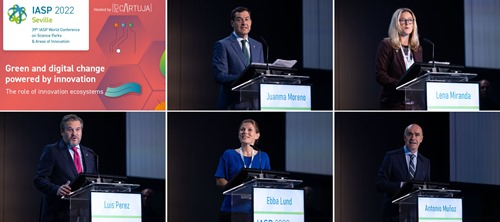
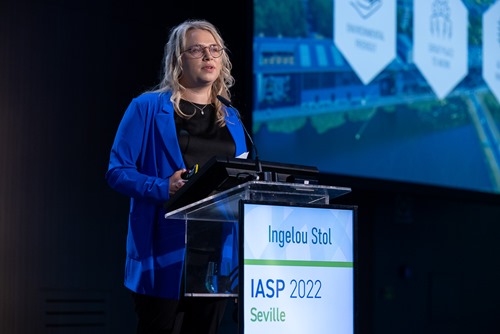
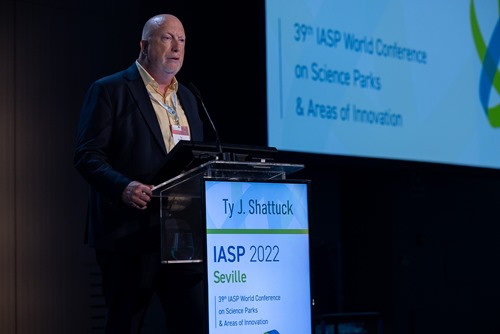
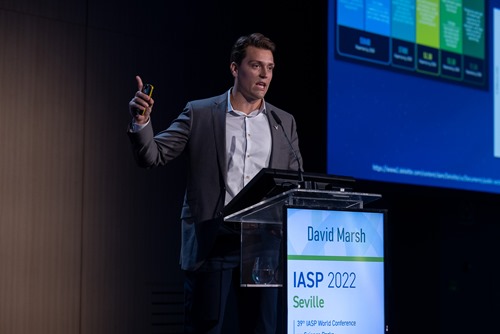
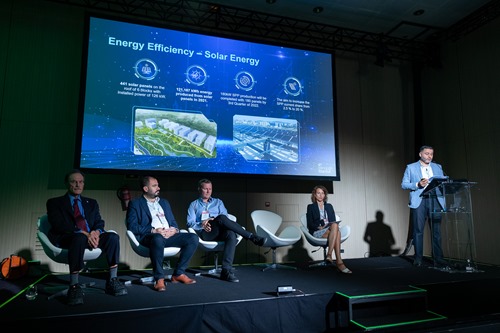
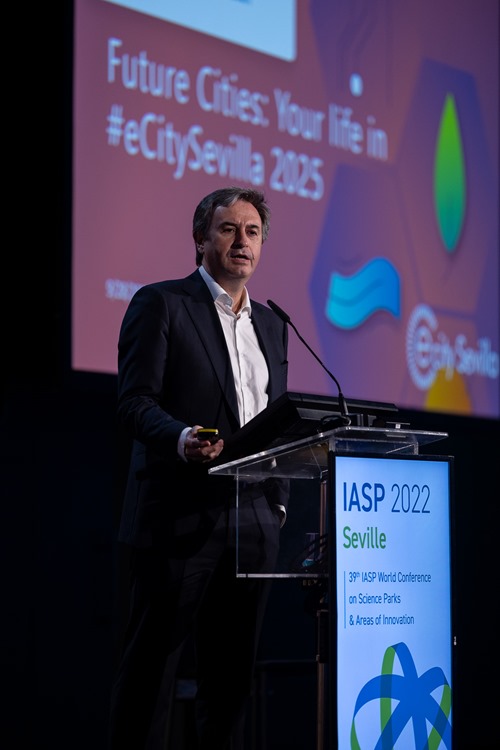
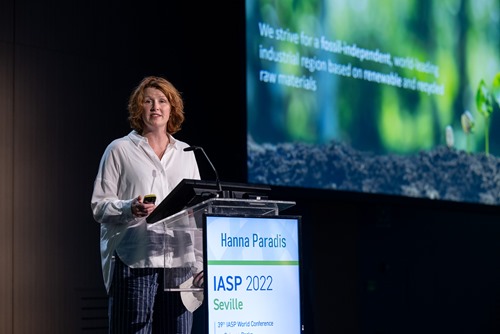
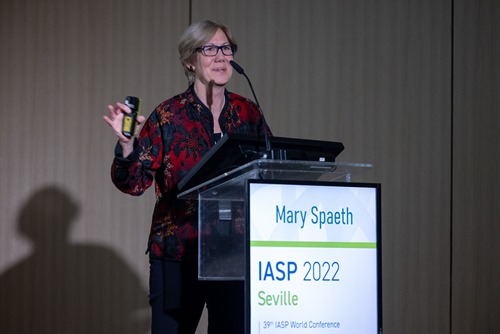
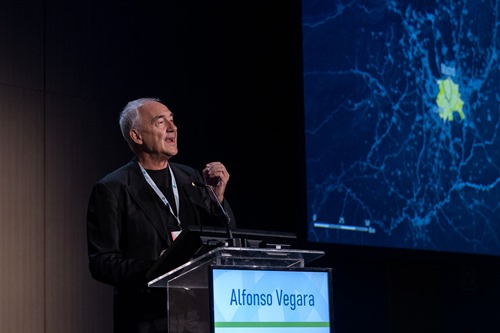
/canvascolor(0xffffffff)/2018_01_25_Italy_Comonext.png)
/canvascolor(0xffffffff)/2018_10_31_Canada_Quebec_International.png)
/canvascolor(0xffffffff)/Clipboard-2.jpg)
/canvascolor(0xffffffff)/MemberLogo-55602-27601.jpg)
/canvascolor(0xffffffff)/LOGO_KFUID_2.jpg)
/canvascolor(0xffffffff)/2018_01_24_Italy_Kilometro_Rosso.png)
/canvascolor(0xffffffff)/parquecientificoblancoh_1.jpg)
/canvascolor(0xffffffff)/International_STP_Turkmenistan.png)
/canvascolor(0xffffffff)/a199d804-8c21-4ac9-8368-397e365fbc80_13.jpg)
/canvascolor(0xffffffff)/2023_06_08_Australia_Melbourne_Innovaiton_District.jpg)
/canvascolor(0xffffffff)/MemberLogo-5673-6109.jpg)
/canvascolor(0xffffffff)/2020_09_09_Sweden_Luleea_SP.png)
/canvascolor(0xffffffff)/IMG_6669_1.png)
/canvascolor(0xffffffff)/Durana_Tech_Park_Logo_B_(1)_page-0001_6.jpg)
/canvascolor(0xffffffff)/2017_07_31_University_of_Iceland.jpg)
/canvascolor(0xffffffff)/2025_11_04_Saudi_Arabia_Dhahran_Techno_Valley.png)
/canvascolor(0xffffffff)/Logotyp_Pos_Round_3.png)
/canvascolor(0xffffffff)/New_Logo_sapiens_(1)_page-0001.jpg)
/canvascolor(0xffffffff)/MemberLogo-5650-6079.jpg)
/canvascolor(0xffffffff)/2019_09_12_Argentina_Buenos_Aires_Innovation_P.png)
/canvascolor(0xffffffff)/2017_07_26_China_TusHoldings_TusPark.png)
/canvascolor(0xffffffff)/Technology_Park_Ljubljana.png)
/canvascolor(0xffffffff)/2017_06_08_Panama_Ciudad_del_saber.png)
/canvascolor(0xffffffff)/Andorra_RGB_RI-1_1.png)
/canvascolor(0xffffffff)/Aj_basa_2014_color-fonsgrisE_2.png)
